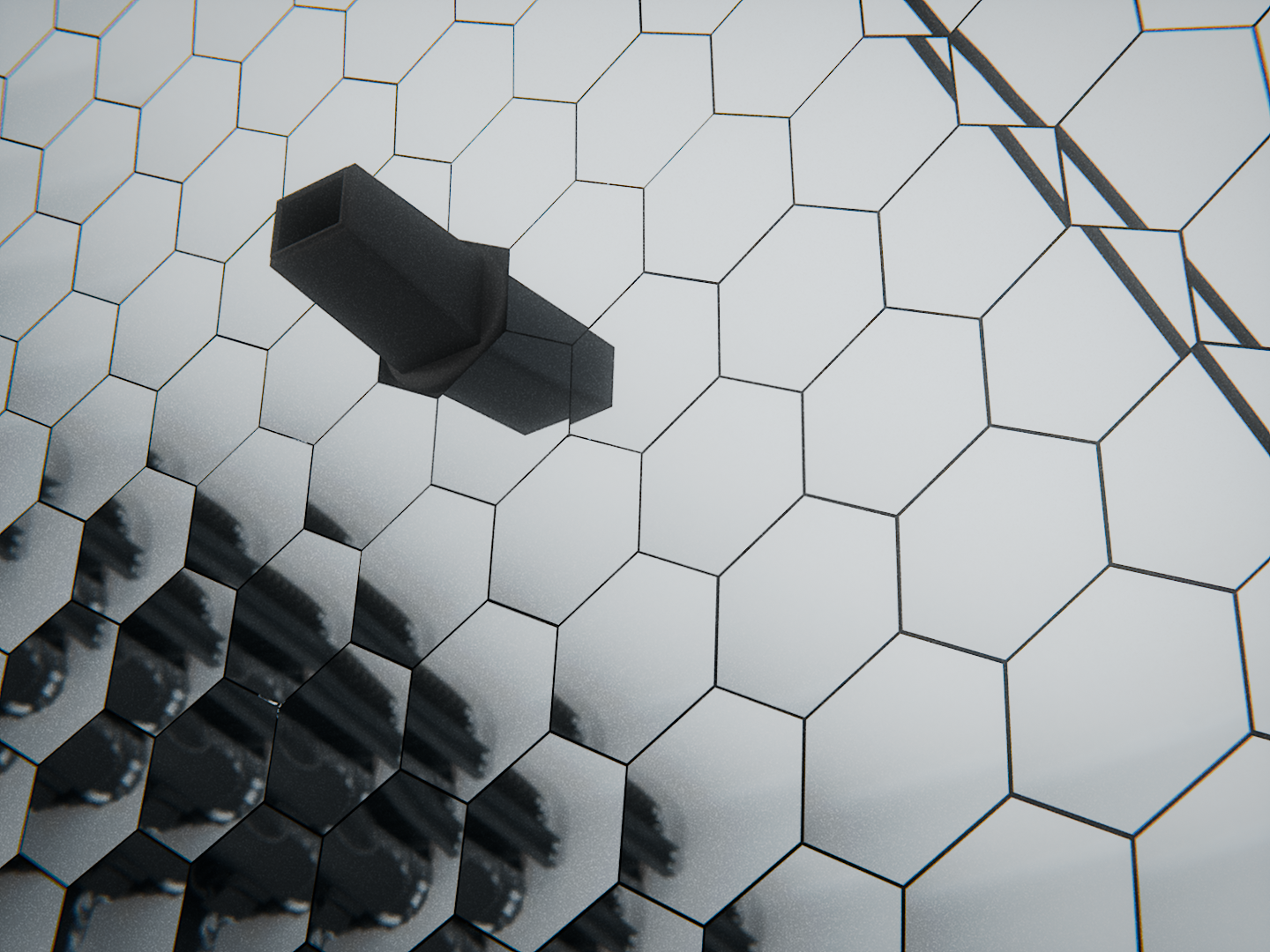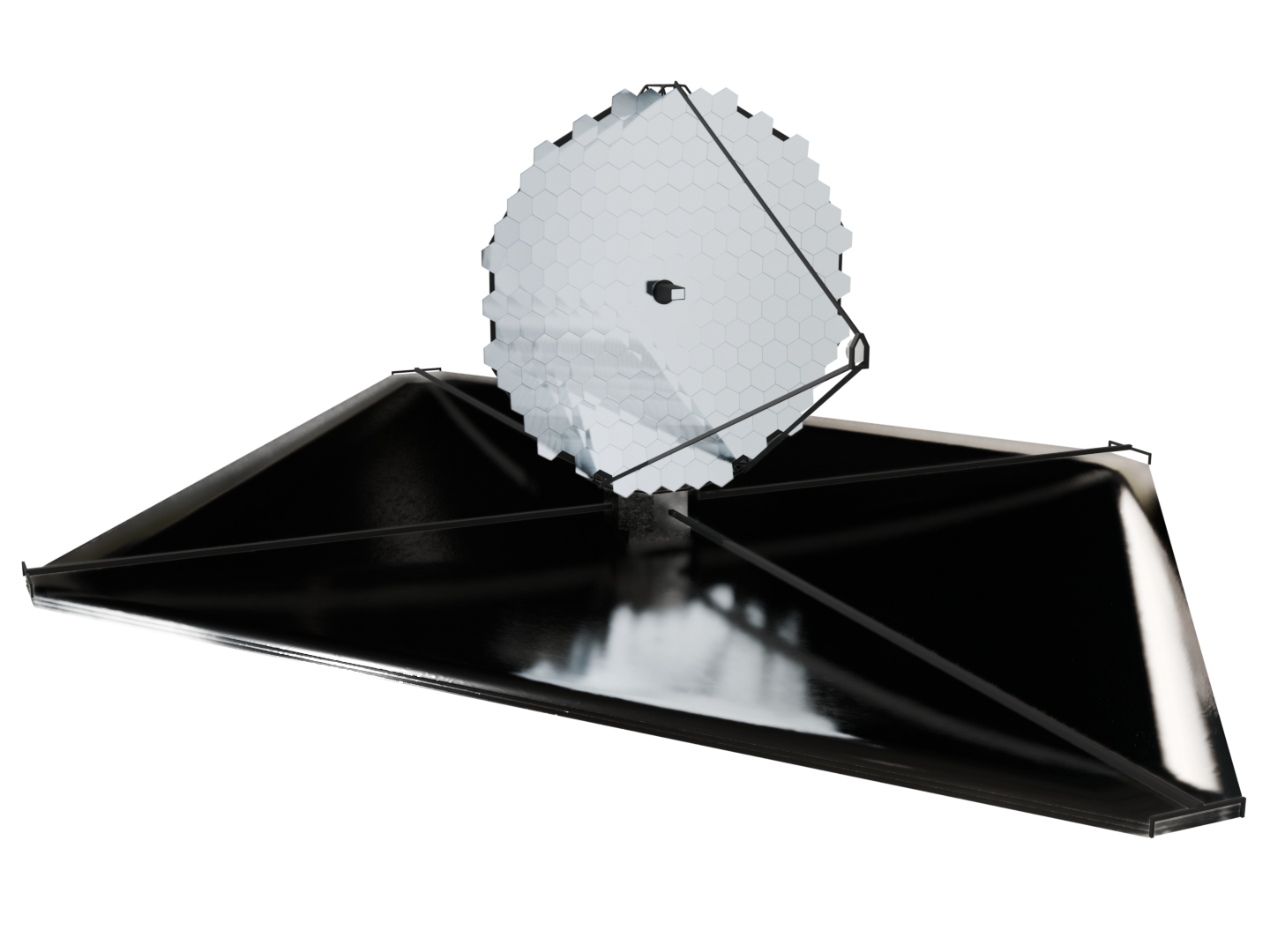Luonnotar Astronomical Space Telescope
The Luonnotar Astronomical Space Telescope (LAST) is a space telescope designed to conduct visible to ultraviolet astronomy. It is the largest telescope in the Lys system and is equipped with state-of-the-art instruments, allowing it to view exoplanets from as far as 10,000 light years away.
LAST completed assembly on 25 December 2421 at the Lys-Ukko L2 point, making it the first large scale orbital construction outside of Luonnotar's sphere of influence. It released its first image to the public less than 2 months later.
Features
LAST has a 20 meter diameter aluminium and magnesium fluoride coated beryllium primary mirror made up of 198 separate hexagonal mirrors. The mirrors segments are coated with aluminium to provide reflectivity, and on top of it is the magnesium fluoride layer which protects the aluminium from oxidation as well as to increase the reflection of ultraviolet light.
Location and orbit
LAST operates in a halo orbit, circling a point known as the Lys-Ukko L2 Lagrange point. This point was chosen as it was far enough from Lys that cooling systems could be less complex, while at the same time constantly receive sunlight from the sun-facing side of the spacecraft. The orbit is also wide enough that Ukko would not block direct communications between LAST and Luonnotar.
Sunshield protection
LAST is equipped with several sensitive instruments that require low temperatures to conduct proper experiments. The sunshield blocks light and heat from Lys, Ukko and its moons, and its position at the L2 point continously keeps all the bodies on the same side of the spacecraft.
The sunshield was cut from scrap sheets of film from the ships previously used to send humans to the Lys system, saving time and cost. Only one sheet of scrap film was required to make the three layers of sunshield needed for the telescope.
Optics
LAST's primary mirror is a 20m diameter aluminium and magnesium fluoride coated beryllium reflector with a collecting area of roughly 310 m2. It was decided to make the mirror in segments using an already existing mirror manufacturing plant at the Luonnotar L2 point that was used to create small or prototype telescopes, to save on cost, and for ease of transport to Ukko. The mirror segments were transported to Ukko's L2 point where final assembly of LAST took place.
Assembly
The Assembly Confinment Room(ACR) started construction in 2415 at the Lys-Ukko L2 point. The ACR is a box-like housing which is to protect the telescope during assembly from micrometeriod impacts and dust particles, and is about 400,000 cubic meters in volume to accomodate the large telescope.
Manufacturing of the mirror segments and satellite bus began 2 years later, and was later transported to the ACR where they would be stored for the time being while awaiting the remaining parts. The telescope sensor finished construction in 2418 and was transported to the ACR along with various other instruments and sensors. The sunshield was the last part to be transported over due to a rip caused during testing of one of the shields, delaying the project by a couple of months.
Final assembly started in mid 2420 with the attachment of the mirror segments to the supports, followed by the connection between the entire mirror and satellite bus. Assembly was completed just over a year later on 25 December 2421, and was taken out of the ACR a month later for commissioning.
Gallery

A photo of LAST's mirros and image sensor inside the Assembly Confinment Room
Luonnotar Astronomical Space Telescope

Render of the fully deployed Luonnotar Astronomical Space Telescope
| Mission type | Astronomy |
|---|---|
| Operator | National Astronomy Institution |
| Mission duration | 5 years, 6 months, 21 days (elapsed) 50 years (expected life) |
Spacecraft properties
| Manufactuer | |
|---|---|
| Assembled mass | 10,200 kg |
| Dimensions | 81.9 m × 61.5 m, sunshield |
| Power | 5 kW |
Start of mission
| Assembled date | 25 December 2421 |
|---|---|
| Assembly location | Lys-Ukko L2 point |
| Entered service | 4 Feburary 2422 |
Orbital parameters
| Reference system | Lys-Ukko L2 orbit |
|---|---|
| Regime | Halo orbit |
| Periapsis altitude | 500,000 km |
| Apoapsis altitude | 1,750,000 km |
| Period | ~1 year |
